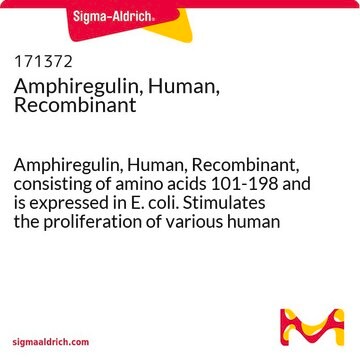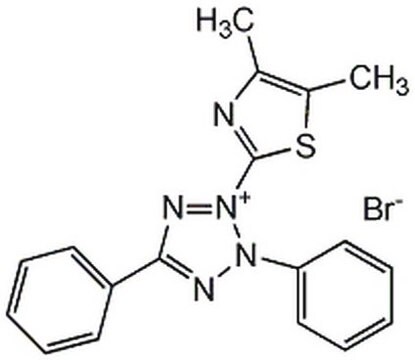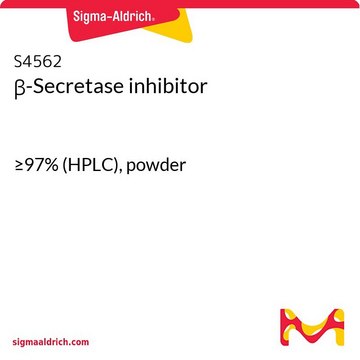A7080
Amphiregulin human
≥97% (SDS-PAGE), recombinant, expressed in E. coli, lyophilized powder, suitable for cell culture
Sinónimos:
AREG, CRDGF, SDGF, AR
About This Item
Productos recomendados
Nombre del producto
Amphiregulin human, recombinant, expressed in E. coli, lyophilized powder, suitable for cell culture, ≥97% (SDS-PAGE)
origen biológico
human
Nivel de calidad
recombinante
expressed in E. coli
Ensayo
≥97% (SDS-PAGE)
Formulario
lyophilized powder
potencia
10-100 ng/mL ED50/EC50
mol peso
~11 kDa
envase
pkg of 1 mg
condiciones de almacenamiento
avoid repeated freeze/thaw cycles (Do not store in a frost-free freezer.)
técnicas
cell culture | mammalian: suitable
impurezas
endotoxin, tested
Nº de acceso UniProt
temp. de almacenamiento
−20°C
Información sobre el gen
human ... AREG(374)
Acciones bioquímicas o fisiológicas
Componentes
Precaución
Forma física
Nota de preparación
Nota de análisis
Código de clase de almacenamiento
11 - Combustible Solids
Clase de riesgo para el agua (WGK)
WGK 3
Punto de inflamabilidad (°F)
Not applicable
Punto de inflamabilidad (°C)
Not applicable
Equipo de protección personal
Eyeshields, Gloves, type N95 (US)
Elija entre una de las versiones más recientes:
¿Ya tiene este producto?
Encuentre la documentación para los productos que ha comprado recientemente en la Biblioteca de documentos.
Los clientes también vieron
Nuestro equipo de científicos tiene experiencia en todas las áreas de investigación: Ciencias de la vida, Ciencia de los materiales, Síntesis química, Cromatografía, Analítica y muchas otras.
Póngase en contacto con el Servicio técnico










